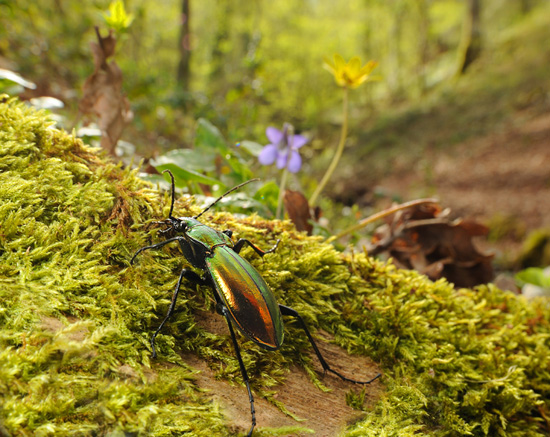During the Eastern holidays I spent a week in the Pyrenees Atlantiques and in the Aude, in southern France. Unfortunately the nights were still very cold and there seemed to be very few ground beetle activity. A lot of Ground Beetles had already left their winter hides in slopes, dead wood and under mosses. A few weeks before the temperature had been higher, and most of the beetles which had left their winter hides were probably now inactive and hiding under leaves or stones. This made it more difficult to find the beetles, but anyway I managed to find most of my target species.
A first interesting species I found was the Carabus cancellatus on the Pic d'Arradoy, at Saint-Jean-Pied-De-Port. This once more common beetle in Western Europe, has now become rare and local. In this region, with a lot of old forests and extensively grazed pastures, with old hedges, and tree rows, the beetle is still fairly well represented.
Here's an image of the Carabus cancellatus.
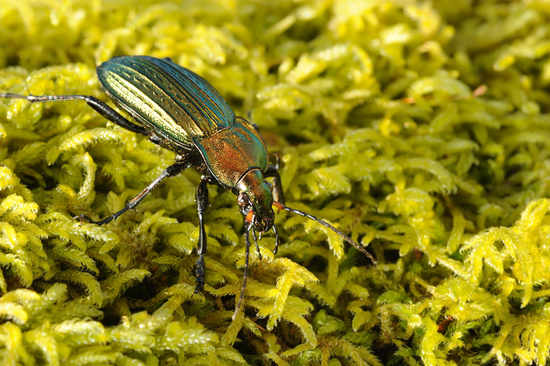
Main target species at the Pic D' Arradoy, was the Carabus splendens. Carabus splendens is one of the more spectacularly coloured ground beetles of southern france. Most of the specimens are usually greenish to reddish-coppery coloured. The Pic d' Arradoy is famous for being host to the biggest individuals of Carabus splendes and moreover, there is quite a lot of colour variation found in the specimens on the mountain.
The first two images under here shows a very large female, measuring about 35 mm in length. This individual is rather typically greenish-reddish coloured. The colour also varies depending on the angle you look at the beetle. From above the reddish coppery colour is more obvious, while when looking from a lower angle the green becomes more striking. These specimens belong to the subspecies 'lapurdanus', natio arradoyensis.
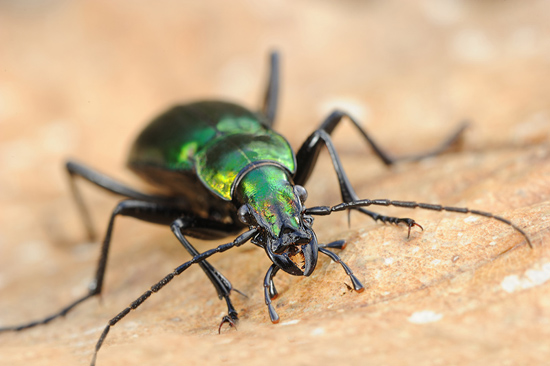
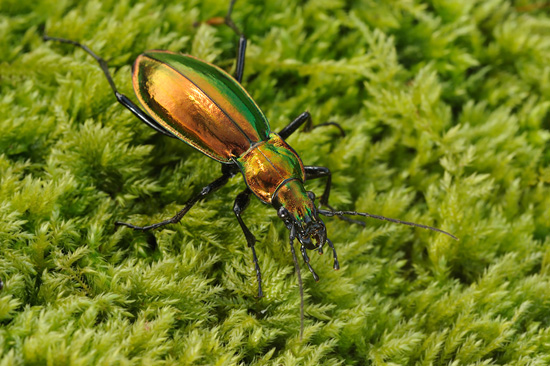
Under here you'll find some nice colour variations: an orange and a reddish coloured individual and finally one with a beautiful purple to bordeaux-patched thoracic shield.
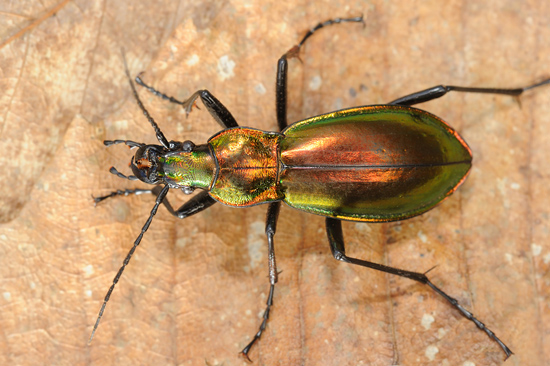
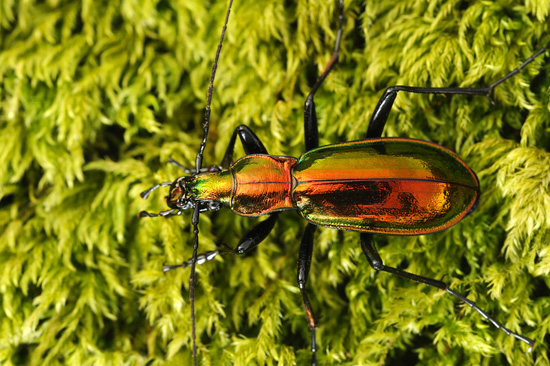
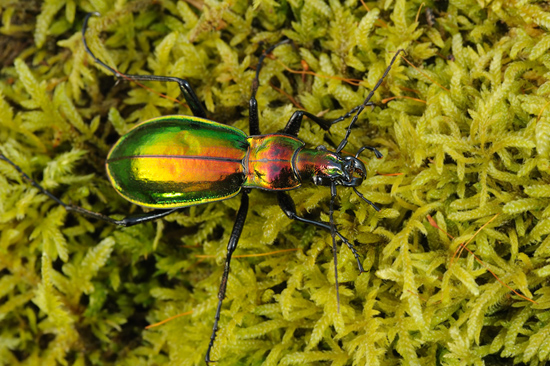
In the Aude, I found in a beech forest with a lot of Buxus undergrowth a very large Carabus rutilans, measuring about 40 mm. A French Carabus specialist, André Lequet, who has a lot of experience with this species, pointed out that this specimen is very likely to be a natural hybrid between Carabus rutilans and Carabus hispanus, which is called 'croesus'. Interbreeding experiments have proved that the female 'croesus' specimens can be fertile. When they mate successfully with 'hispanus' or 'rutilans' males, their offsping can have again features resembling very closely a 'hispanus' or 'rutilans'. According to André Lequet who did several interbreeding experiments, this specimen looks very similar to a 'croesus' from several generations old, with a dominance of the 'rutilans' characteristics.
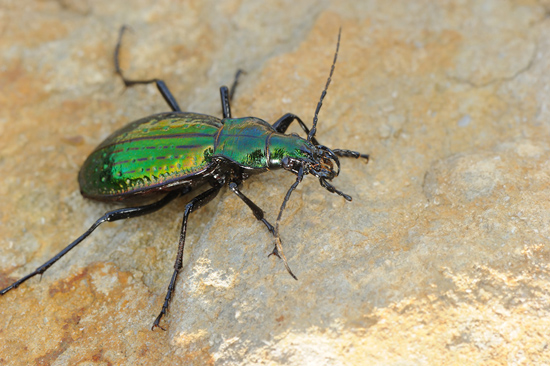
In the same forest I found two interesting colour variations of the Carabus nemoralis. These specimens belong to the subspecies pascuorum, natio meridionalis.
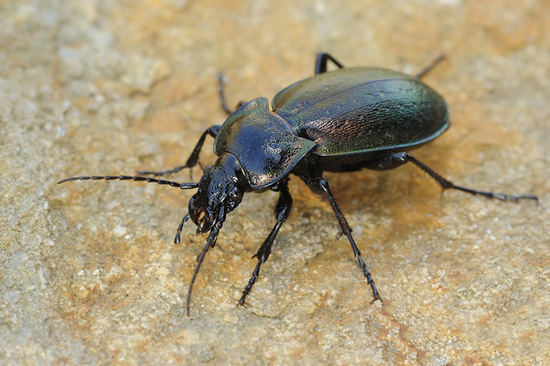
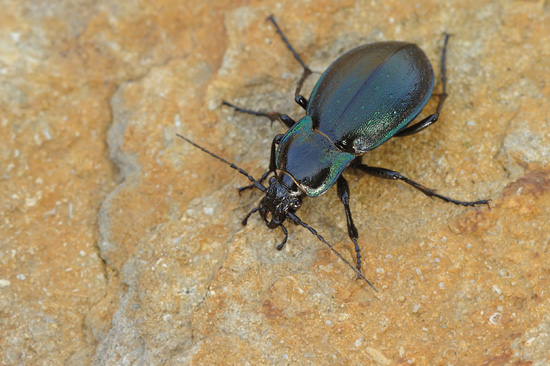
Finally we end with an image of Carabus splendes in it's environment, a nice old old growth forest with flowering spring plants.
Special thanks to André Lequet and Ief Peeters for providing me information about the interesting forests and good spots to find the ground beetles!
